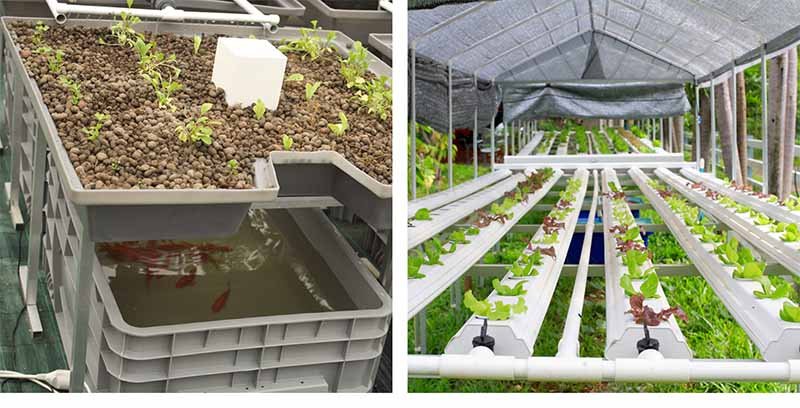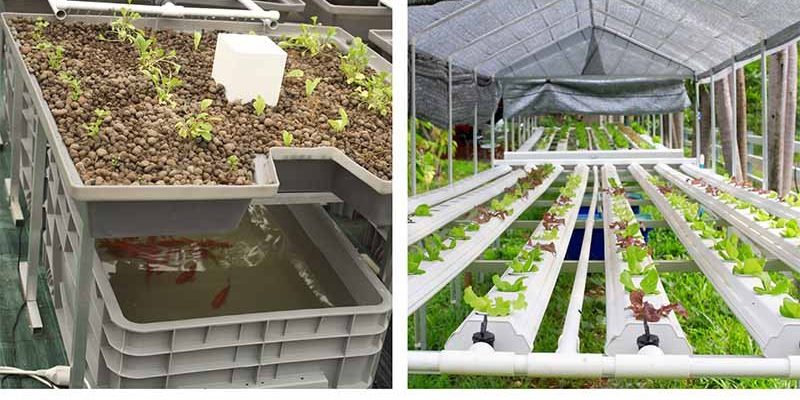
Imagine you’re at a coffee shop, casually chatting about how to grow your own food. You might hear someone say, “Aquaponics uses fish waste to nourish plants!” Sounds interesting, right? But what if I told you aquaculture focuses solely on raising fish, while hydroponics is all about growing plants without soil? It’s a bit like having three different recipes for a delicious meal, where each recipe has its own special ingredients and techniques. Let’s dive deeper into these methods so you can understand their differences, and maybe even find one that suits your gardening dreams!
What is Aquaponics?
Aquaponics is like a beautiful symbiotic relationship between plants and fish. In a typical aquaponic system, you have fish living in a tank, and beneath this tank, you have a growing bed filled with plants. The fish produce waste, which is rich in nutrients. This waste is pumped to the plants, providing them with the nourishment they need to thrive. As the plants take in these nutrients, they help filter the water, sending it back to the fish tank clean and ready for the fish to enjoy.
This method is both sustainable and efficient. You’re not only producing food but also creating a closed-loop system that minimizes waste. If you think about it, it’s like having a tiny ecosystem right in your backyard! You might be wondering how to set this up. Here’s a quick outline of the basics:
- Choose your fish: Tilapia and goldfish are popular options.
- Set up a tank for the fish and a separate growing bed for the plants.
- Consider a pump system to circulate water.
One of the best things about aquaponics is its ability to yield both fish and crops, making it a great option if you want to diversify your food supply. Just keep in mind that it’s essential to monitor the balance between fish and plants so both can thrive.
Understanding Aquaculture
Now, let’s shift gears to aquaculture. Imagine it as the fish-farming cousin of aquaponics. While aquaponics focuses on both fish and plants, aquaculture is all about raising fish and other aquatic organisms in controlled environments. This method can take place in a variety of settings, from backyard ponds to large-scale ocean farms.
Aquaculture is crucial because it meets the growing demand for fish as a protein source. With overfishing becoming a significant concern, aquaculture offers a sustainable alternative. Here’s how it works:
- Fish are bred and raised in tanks, ponds, or cages.
- They are fed a nutritionally balanced diet to ensure their health.
- Water quality is closely monitored to keep the fish safe and healthy.
This system can produce a wide variety of fish, including salmon, tilapia, and shrimp. However, unlike aquaponics, aquaculture doesn’t provide the added benefit of growing plants, so it’s primarily focused on fish production.
Diving Into Hydroponics
Next up is hydroponics, which is all about growing plants without soil. Imagine a lush garden with vibrant green lettuces, tomatoes, and herbs just floating in water! Hydroponics uses nutrient-rich water solutions to feed the plants directly. This means plants can grow faster since their roots have easy access to everything they need.
There are several different methods of hydroponics, each with its own twist. Some popular types include:
- Nutrient Film Technique (NFT): A thin film of nutrient solution flows over the roots of the plants.
- Deep Water Culture (DWC): The roots are submerged in a nutrient solution, allowing them to absorb oxygen.
- Wicking System: A wick draws the nutrient solution from a reservoir to the plants above.
Hydroponics is generally easier to set up than aquaponics because you don’t need to worry about fish. Plus, it can be done indoors or outdoors, depending on your space. The downside? You miss out on the fish—though you can always add fish farming to your plate later!
Comparing the Three Systems
So, how do aquaponics, aquaculture, and hydroponics stack up against each other? Let’s break it down.
| Method | Focus | Products | Complexity |
| Aquaponics | Plants and fish | Fish + vegetables/herbs | Moderate |
| Aquaculture | Fish and aquatic organisms | Fish only | Moderate to high |
| Hydroponics | Plants | Vegetables/herbs | Low to moderate |
In this table, you can see a clear distinction between each method. Aquaponics combines both plants and fish, aquaculture is fish-focused, and hydroponics is all about growing plants. Depending on what you want to achieve, you can choose the one that suits your needs best.
Challenges and Considerations
Each of these systems comes with its own set of challenges. For instance, aquaponics requires careful balance. If the fish aren’t producing enough waste or the plants aren’t thriving, the entire system can be affected. On the other hand, aquaculture farmers must manage fish health and prevent disease, which can spread rapidly in dense environments.
Hydroponics, while simpler, still needs careful monitoring of nutrient levels and pH to ensure optimal plant growth. If you don’t keep an eye on things, your plants might not thrive as you’d hope!
When choosing which method to pursue, think about your available space, resources, and the time you want to invest. Each system has its own rewards, but understanding the potential hurdles can help you better prepare for success.
Final Thoughts on Aquaponics, Aquaculture, and Hydroponics
In summary, aquaponics, aquaculture, and hydroponics each offer unique approaches to growing food. Aquaponics combines the joy of raising fish with the satisfaction of growing plants, creating a mini-ecosystem. Aquaculture focuses on sustainable fish farming, while hydroponics lets you grow plants without soil, offering a versatile approach for urban gardeners or those with limited space.
Deciding which method is best for you can be an exciting journey. Whether you’re looking to dive into fish farming or cultivate your own indoor garden, each method has its own charm and benefits. Whichever path you choose, know that you’re contributing to sustainable living and discovering the joys of growing your own food. Happy gardening!

